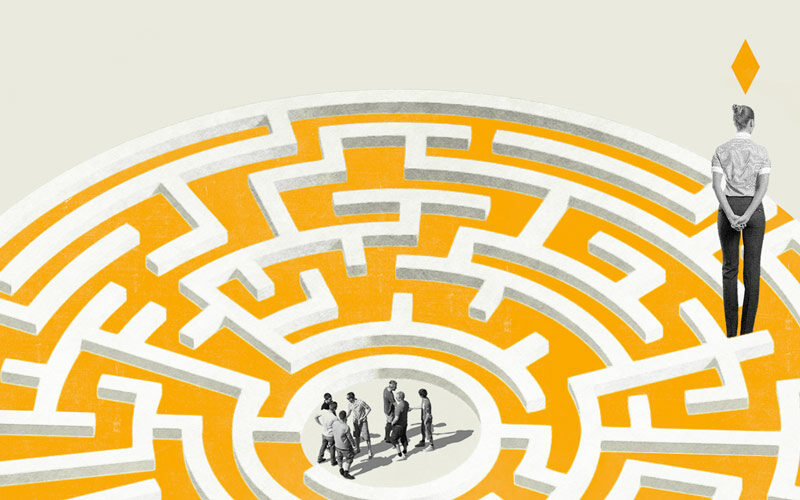The Labour government wants fledgling founders to take $11,000 and a capstone year to get serious about their startups.
As the consultation paper promises, the new student Startup Year loan will “allow students to take a business-focussed capstone year, working with an accelerator to develop their innovative ideas”.
It comes in response to our slippery descent of the Global Innovation Index, in which Australia fell from 17th in 2014 to 25th by 2021.
On a larger scale, the Startup Year will “stimulate the national focus on entrepreneurship and an innovation culture and boost business dynamism”.
The loan will go to as many as 2000 entrepreneurial undergrads. At first glance, it’s a welcome sign that governmental policy is finally favouring new enterprise, and investing in innovation at the source.
Similarly to HECS-HELP loans, the sum is interest free. There’s an earning threshold before students need to start repaying. And it’s income contingent.
On paper, these all sound like pros.
But inflation-tied loans are not great news when inflation is off the charts. The earning threshold is AUD $48,000 – far from a “set for life” salary. And income contingency means little when the middle class is feeling the pinch too.
There are questions about the usefulness and/or wisdom of this fully repayable lump sum. As anyone who’s tried to start up in any serious way will know, $11k doesn’t go far. If it can’t take you to MVP, traction, or a successful investment round, it’s $11k down the drain. And yet more student debt to be saddled with.
Not for nothing, student debt affects loan applications and mortgage eligibility. 1.3 million Aussies owe $20,000 or more in student debt. And their numbers are growing.
With Australian investment in startups having been so slow to manifest, there’s something to be said for not looking a gift horse in the mouth. The intentions are good, and there’s no doubt this money could save budding founders from the binds of traditional employment. Maybe it’ll even save students from giving up on their entrepreneurial dreams for good.
But with no lending criteria in terms of commercialisation for success, is this thing going to work in the long term?
Good debt, bad debt
Let’s be pessimistic and start with the potential pitfalls.
First: these aren’t loans for higher education or vocational training. Nothing is guaranteed, but chances are if you study for a Bachelor’s in Law or an apprenticeship in joinery, you’re likely to secure employment in that area, and boost your earnings as a direct result of that study.
Startups have high ambitions at the best of times. For first-time founders fresh out of university with no experience of in-industry employment, managing teams, or raising funds, we have to ask (admittedly patronising) questions about their potential for success.
Of the 2000 students awarded the loan annually, how many are going to turn a profit? Make a successful exit? Even be able to pay it back?
Of HELP loans, Dr Gwilym Croucher from Melbourne Uni’s Centre for the Study of Higher Education said: “You can get some quite perverse outcomes where people are better off not earning the extra dollar.”
In times of accelerated inflation, “good debt” can go bad. And we’ve just hit a 32-year high.
A year well spent
Let’s look on the bright side for a second.
$11k is not an insignificant sum – but it’s not debilitating. No one’s throwing a million dollars at teenagers and telling them to go nuts. The addition to student debt already in the tens of thousands is not devastating – but it might just be enough to be life changing.
It’s not like young Aussies are blithely unaware of their debt or its implications for their futures. 72% of Gen Z still wants to own a home someday. No one’s applying for this loan if they don’t think they have a shot at earning it back.
A year of freedom to focus on an idea, a product, or just the skill of starting up itself will be hugely valuable to young wantrepreneurs. There are lessons to be learned within the safe(ish) and supportive environments of university accelerations – even if those lessons come from not finding product market fit, or even founder market fit.
Accelerator programs not only teach the fundamentals of startup success, but facilitate a startup’s journey out of an academic environment and into the next phase of development (i.e. commercialisation).
The idea is to get knowledge, research, and innovation out into the market and the hands of people who can benefit. The result is opportunities for startups, increased revenue for universities, and ultimately better products for consumers.
It’s about having the inventive output of brilliant students incorporated into actual products, rather than languishing on a shelf or in abandoned notebooks. The market is full of postgrads and PhDs, educated to the hilt, but with inadequate career or research opportunities to accommodate them.
Then it’s onto operational venture capital. VC firms do more than provide funding, facilitate network connections and assist with operational strategy. They help those fresh out of lifelong education find their feet in the corporate world.
It’s that extra dose of financial help like Startup Year loans that allow students to continue onto accelerators, and bridge the gap before they get to VC stage.
It might not be a perfect programme, but with the first cohort starting in July 2023, it is only a pilot programme.
When it comes to the Australian knowledge economy, no investment should be sniffed at. If children are our future, students are our present.
Learnings from this experimental first run might indicate the need for more stringent lending criteria – like production of a full business plan, milestones, market research. The key will be remaining accessible, and avoiding bias towards privileged students who may be better connected and more business-savvy.











